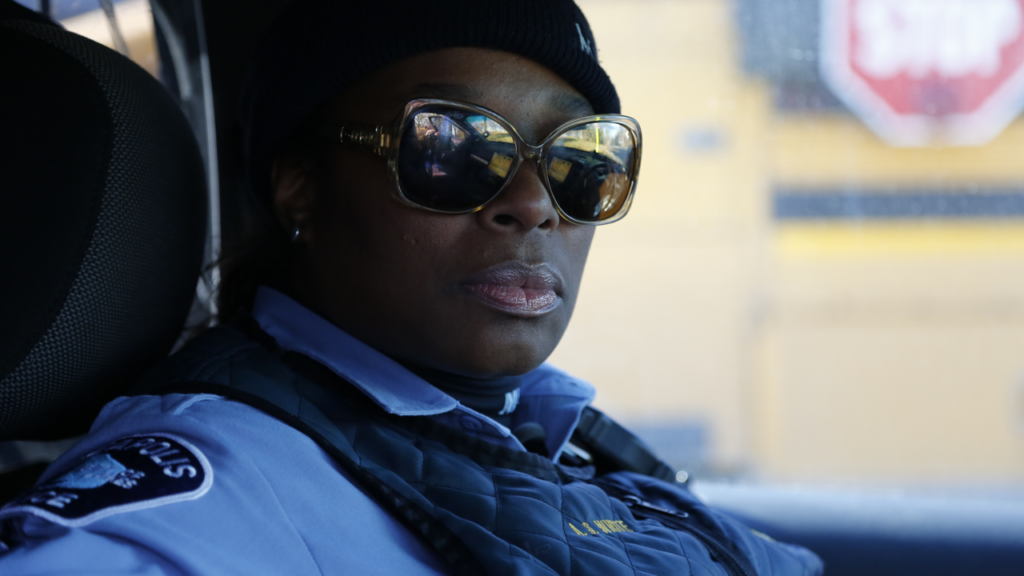“I can’t breathe.”
These were the last words spoken by Eric Garner, a black man strangled and killed by police in July of 2014. These words became a rallying cry among protesters, and Garner’s death was one of many killings that ignited a larger conversation about police brutality in America.
On the night of Garner’s death, movie producer and director Deirdre Fishel was only several blocks away shooting a film. Completely shook by the violence, Fishel reached out to a friend, a woman police officer, and asked her a simple question: “Could this have happened if you were there?”
Her short answer: No.
The police officer told Fishel, “It’s all about how the situation was escalated. It’s just basic de-escalation training.”
Fishel told Ms.: “I started thinking about this notion that nobody was talking about: What could women bring to policing?”
Turns out: a whole lot.
Ms. editor Kathy Spillar wrote of the merits of women in policing in the winter 2015 issue:
Perhaps if the police officers who confronted Michael Brown and Eric Garner had been women, the outcome of those encounters would have been very different.
Studies over the last 40 years have already shown that women officers are less authoritarian in their approach to policing, rely less on physical force than men do, possess better communication skills and increase police response to violence against women. Most importantly, women officers have proven to be better at defusing potentially violent confrontations with citizens before those encounters turn deadly.
Women police officers have also proven better at responding to violence against women, the largest category of 911 calls to police departments nationwide.
Women in Blue
Fishel picks up this conversation in a new film called Women in Blue.
In Minneapolis, the July 2017 killing of an unarmed woman named Justine Damond resulted in Minneapolis’s first female police chief Janee Harteau being pushed out, threatening the gains women had made in the department.

Following three female police officers—Cmdr. Melissa Chiodo, the first woman head of Special Crimes; Sgt. Alice White, who leads procedural justice trainings; and rookie Officer Erin Grabosky, who works the night patrol—Women in Blue charts their progress and efforts to remake the department to become more inclusive.
Fishel’s film captures the frustrations and hopes of Chiodo, White and Grabosky, who all struggle in different ways with the challenges of being a woman in a predominantly and traditionally male profession.
“It’s complicated because I don’t think you can make a film that’s just about gender,” said Fishel. “I think the film is really about the intersection between gender, race and violence in American policing, and I don’t think that connection is often made nor is the question being asked what could women bring to help transform police departments.
“I think women can be part of culture change that puts communication and service and care first.”
Minneapolis St. Paul International Film Festival Redefined
Fishel’s film was slated to be released at the Tribeca Film Festival, but the COVID-19 pandemic thwarted these plans—for now.
But the Minneapolis St. Paul International Film Festival—which is going virtual this year due to the pandemic—offers local audiences a chance for a sneak peek screening of the film.
“When the Minneapolis St. Paul International Film Festival decided to do a virtual fest, we decided, because of the opportunity to show the film in the city where it was made, to do it,” Fishel told Ms.
“This is the home town screening. This is the community where this happened. This is where these police women live, and where there has been a lot of pain around policing and around police brutality.”
Women in Blue is the closing night film on Saturday, May 23rd. Tickets to view the film are geo-blocked for Minnesotans; a Minnesota billing address is required to purchase a ticket. (Buy them here.)
The screening will be followed by a live Q&A with Deirdre Fishel—open to all people, regardless of their geo-location. (Register here.)
View a clip of the movie here.





